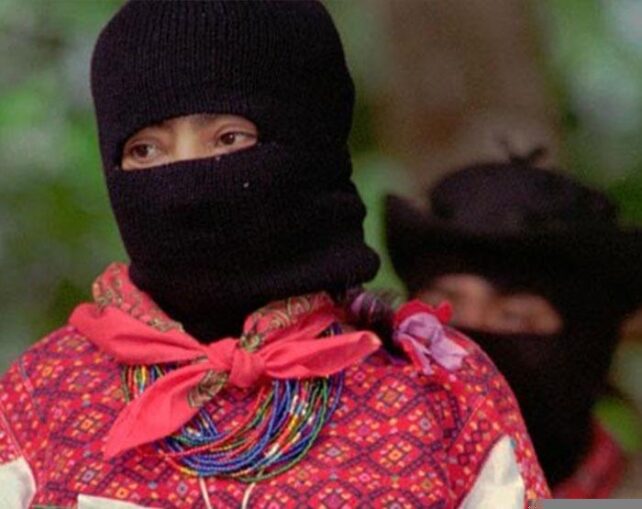
On October 12, 1996 in the capital’s Zócalo, in front of thousands of people, a tiny woman with a giant heart, bright eyes and a sincere look, dressed in a white tsotsil huipil with red embroidery, and covering her face with a balaclava, took the microphone and pronounced an important message: “I am Comandanta Ramona, of the Zapatista Army of National Liberation. I am the first of many steps of the Zapatistas to Mexico City and everywhere in Mexico. We hope that all of you will walk with us.
It was the first time that a member of the Clandestine Revolutionary Indigenous Clandestine Committee of the EZLN came to the city, which meant not only breaking the military siege, but also reinforcing the dialogue and meeting with many other native peoples and social sectors of Mexico: “We came here to shout, together with everyone, that no more, never again a Mexico without us,” said Ramona. And she continued: That is what we want, a Mexico where we all have a dignified place. That is why we are willing to participate in a great national dialogue with everyone. A dialogue where our word is one more word in many words and our heart is one more heart in many hearts.
In clandestinity, Comandanta Ramona had played a key role within Zapatismo. She participated in a revolt from within the revolt, or what the late sub Marcos called the first uprising of the EZLN. Together with Comandanta Susana and other women, before January 1, 1994, Ramona had promoted the revolutionary women’s law, a document that among other points established that women, regardless of race, creed, color or political affiliation, have the right to participate in the revolutionary struggle in the position and to the degree that their will and capacity determine.
Ramona became the most visible figure of several generations of Mayan Zapatista women who went from living in subjugation to colonialist, patriarchal and capitalist structures to being at the head of an insurgent political-military organization. Let us recall, for example, that in 1993 Chiapas farmers exercised the right of pernada in the families of their peons, that is, they practiced their right to rape women who married one of their peons. In 2013, in connection with the Zapatista school – an initiative in which the Zapatista communities showed thousands of people from all over the world their achievements on a daily basis – different women support bases recounted how the revolutionary women’s law was put into practice. The exercise was fantastic, and also resulted in a proposal to expand the law with 33 new articles.
In May 2015, 20 years after the war against oblivion began, at least six generations of Zapatista women shared their words about how the situation of women changed during that time. The testimonies, compiled in the section The Struggle as the Zapatista Women We Are of the book Critical Thinking in the Face of the Capitalist Hydra I, are exceptional documents of collective and transgenerational self-evaluation. There, the Zapatista support base Lizbeth said: We as […] young Zapatistas of today, we no longer know what a foreman is like, what a landowner or boss is like […]. We now have the freedom and the right as women to give our opinion, to discuss, to analyze, not like before. In the same vein, in April 2018, at least six generations of Zapatista women would recount the advances and challenges of Zapatista women.
Comandanta Ramona passed away on January 6, 2006, but her footsteps continue to echo in Zapatista Chiapas, in Mexico and around the world. In 2019, in the Semillero “Huellas del Caminar de la Comandanta Ramona,” the second International Meeting of Women in Struggle would be held with the presence of thousands of women from different countries, and in 2021, the Zapatista Maritime-Terrestrial Training Center would be established there, the place where the almost 200 Zapatistas who would later travel by boat and plane to unsubmissive Europe stayed.
Comandanta Ramona was the first of many steps of the Zapatistas to Mexico City, and it was also the first part of a long road to walk: one that has taken them to other parts of the world, and that has also invited them to rethink the multiple dominations in relations of exploitation. Twenty-nine years after the war against oblivion, Zapatismo continues to be a dream that embraces many worlds, and Comandanta Ramona became a guiding star in its navigation.
From: https://schoolsforchiapas.org/comandanta-ramona-the-first-of-many-steps-2/